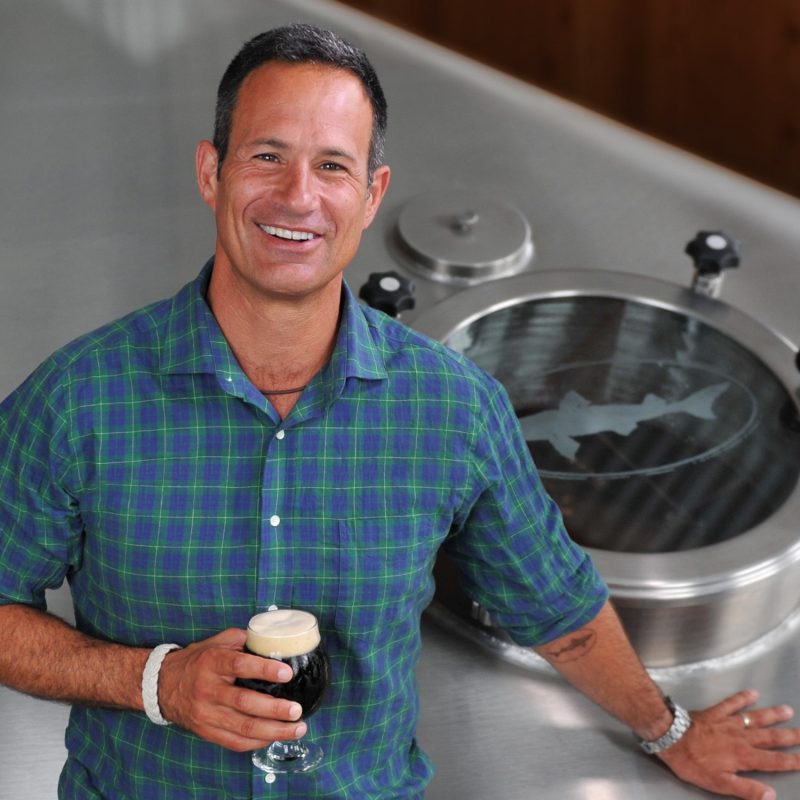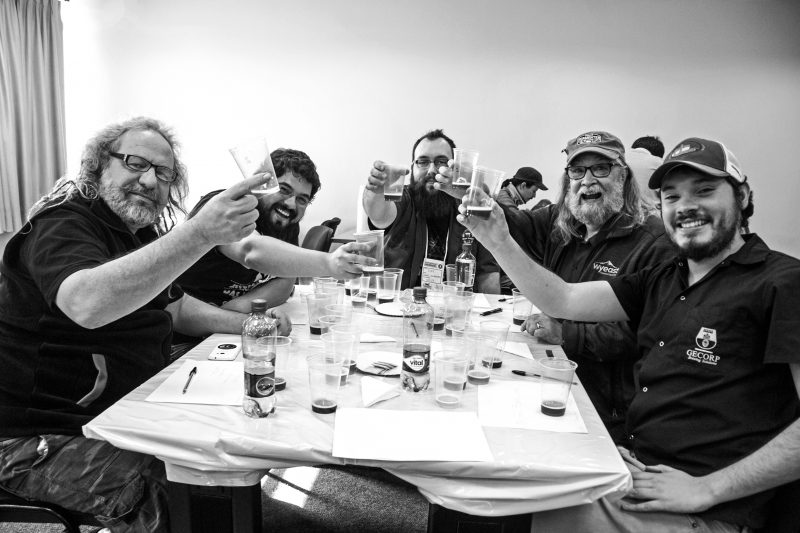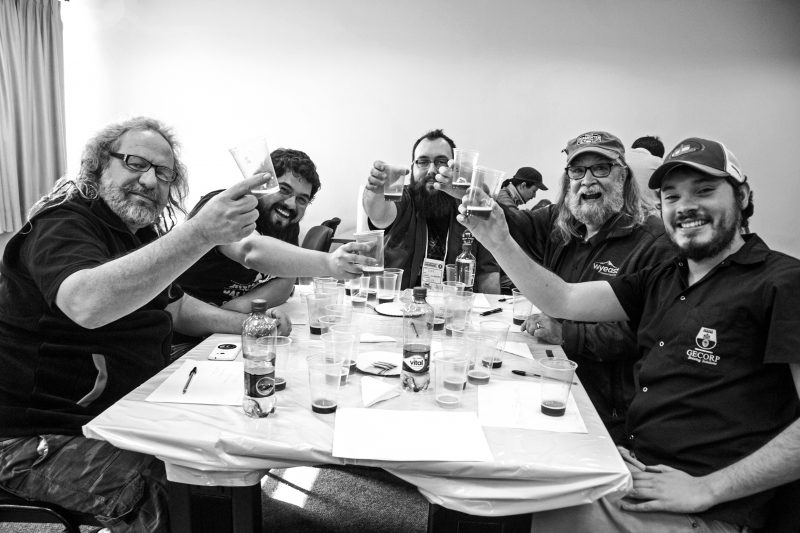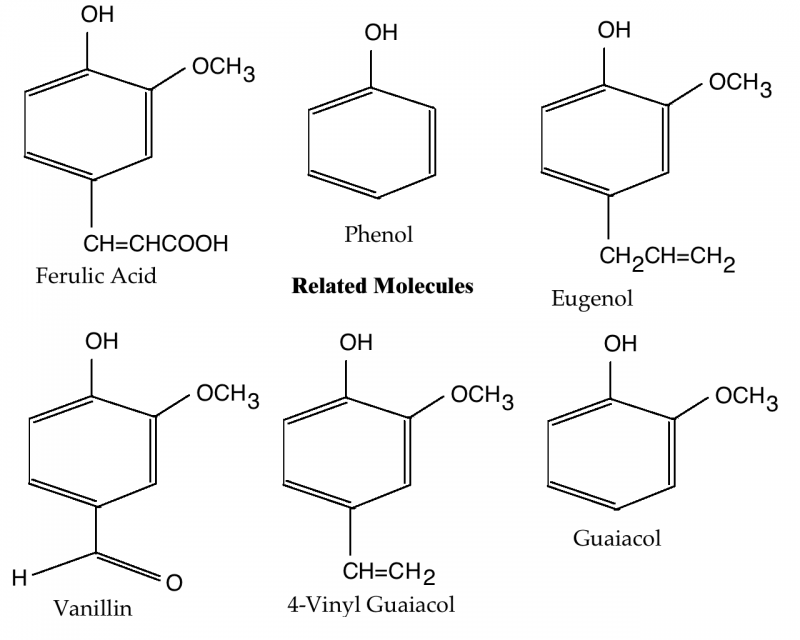
In this installment of Zymurgy Live, Sam Calagione and his fellow Dogfish Head brewers share theories and recipe concepts for beers beyond the Reinheitsgebot. With an open-ended and though-provoking Q&A – especially related to brewing with exotic ingredients, brewing strong beers, and aging on wood – and a contagious passion for brewing shown from the panel of Dogfish Head brewers, this presentation is guaranteed to inspire some experimentation in your next batch of homebrew.
About Project Extreme Brewing
With over 50 homebrew recipes and creative brewing philosophies from dozens of America’s most beloved, respected and coveted indie craft breweries, readers will find step-by-step instructions and tips for making creative, forward-thinking recipes that expand the definition of what ingredients go into making a great beer. Only inside Project Extreme Brewing: An Enthusiast’s Guide to Extreme Brewing at Home can readers learn how to make a Flanders Red inspired by a pastrami sandwich, a not-so-traditional Stout made with chocolate and oysters, or a Scotch Ale designed to mimic the flavors of an Old Fashioned cocktail.
About Our Speakers
Sam Calagione, CEO & Founder

Sam Calagione has been focused on brewing beers with culinary ingredients outside the Reinheitsgebot since 1995 when he first opened Dogfish Head as the smallest American craft brewery. Today, Dogfish has grown into a 300+ person company and is one of the most recognized breweries in the country.
Dogfish Head is based in Delaware with Dogfish Head Brewings & Eats, an off-centered brewpub and distillery, Chesapeake & Maine, a geographically enamored seafood restaurant, Dogfish Inn, a harbor-front beer-themed motel and Dogfish Head Craft Brewery, a production brewery and distillery featuring a tasting room and food truck. Dogfish currently sells beer in 37 states and Washington D.C. and spirits in the mid-Atlantic region.
Sam’s innovative style and collaborative spirit has earned him a reputation as one of the industry’s most adventurous entrepreneurs and brewers. Sam has authored four books and was named the James Beard Foundation’s Outstanding Wine, Spirits, or Beer Professional in 2017. Sam, his wife Mariah (Dogfish VP) and their family reside in coastal Delaware.
Mark Safarik, Brewmaster
 It was 1990 and Mark was just beginning his brewing career, working throughout brewpubs and breweries in both California and Florida. After a number of successful stops, he ventured to MillerCoors in 1998 where he held various positions – ranging from Chemist to Microbiologist, and ultimately Brewing Operations Manager. Looking for an ‘off-centered’ challenge, Mark joined the Dogfish Head team in 2014 and has been guiding our brewing team as Brewmaster since 2016. In his current role he oversees Brewing Operations, Quality Assurance and Product Innovation. As a graduate of the University of California at Davis with a B.S. in Agricultural Economics, he also holds a General Certificate in Brewing from the IBD and is an active member of both the ASBC and MBAA.
It was 1990 and Mark was just beginning his brewing career, working throughout brewpubs and breweries in both California and Florida. After a number of successful stops, he ventured to MillerCoors in 1998 where he held various positions – ranging from Chemist to Microbiologist, and ultimately Brewing Operations Manager. Looking for an ‘off-centered’ challenge, Mark joined the Dogfish Head team in 2014 and has been guiding our brewing team as Brewmaster since 2016. In his current role he oversees Brewing Operations, Quality Assurance and Product Innovation. As a graduate of the University of California at Davis with a B.S. in Agricultural Economics, he also holds a General Certificate in Brewing from the IBD and is an active member of both the ASBC and MBAA.
Bill Marchi, Brewing Supervisor
 After an entry-level brewing course at UC Davis piqued his interest, Bill quickly caught the homebrewing bug. Fast forward ten years and countless homebrew batches later, and you’ll find that Bill left his career in the engineering field to become a professional brewer. Completing Siebel Institute’s Brewing Diploma program in 2014, Bill joined the Dogfish Head team where his current role is Brewing Supervisor, overseeing fermentation and a growing barrel-aged and sour beer program. You’ll also find his knowledge in the authoritative primer, Project Extreme Brewing: An Enthusiast’s Guide to Extreme Brewing at Home, authored by Dogfish Head founder and CEO Sam Calagione, and the Alström Brothers of BeerAdvocate fame.
After an entry-level brewing course at UC Davis piqued his interest, Bill quickly caught the homebrewing bug. Fast forward ten years and countless homebrew batches later, and you’ll find that Bill left his career in the engineering field to become a professional brewer. Completing Siebel Institute’s Brewing Diploma program in 2014, Bill joined the Dogfish Head team where his current role is Brewing Supervisor, overseeing fermentation and a growing barrel-aged and sour beer program. You’ll also find his knowledge in the authoritative primer, Project Extreme Brewing: An Enthusiast’s Guide to Extreme Brewing at Home, authored by Dogfish Head founder and CEO Sam Calagione, and the Alström Brothers of BeerAdvocate fame.
Amanda Petro, Brewing Supervisor
 Amanda’s interest in brewing began just over ten years ago while living abroad in Germany. After homebrewing on the side for many years, she left her career as a QC Microbiologist to become a professional brewer. With a B.S. in Biology from the Pennsylvania State University, she honed her craft brewing skills by completing the Master Brewer’s program at UC Davis. She quickly landed a brewing position at Dogfish Head in 2014, and has recently moved into the role of Brewing Supervisor. In her current role, she oversees brewhouse operations and yeast management, as well as operating the small-batch program at Dogfish Head.
Amanda’s interest in brewing began just over ten years ago while living abroad in Germany. After homebrewing on the side for many years, she left her career as a QC Microbiologist to become a professional brewer. With a B.S. in Biology from the Pennsylvania State University, she honed her craft brewing skills by completing the Master Brewer’s program at UC Davis. She quickly landed a brewing position at Dogfish Head in 2014, and has recently moved into the role of Brewing Supervisor. In her current role, she oversees brewhouse operations and yeast management, as well as operating the small-batch program at Dogfish Head.
John Talkington, Brewer
 With almost 20 years of brewing under his belt, Jon began his Dogfish Head journey 13 years ago. Specializing in historical ales, beers made using honey and barrel-aging, he’s your go-to in guy when it comes to brewing with ‘not-so-normal’ ingredients and processes. Jon is also the owner and mead maker at The Brimming Horn Meadery out of Milton, Del., producing both mead and fruit wines.
With almost 20 years of brewing under his belt, Jon began his Dogfish Head journey 13 years ago. Specializing in historical ales, beers made using honey and barrel-aging, he’s your go-to in guy when it comes to brewing with ‘not-so-normal’ ingredients and processes. Jon is also the owner and mead maker at The Brimming Horn Meadery out of Milton, Del., producing both mead and fruit wines.
The post Project Extreme Brewing with Dogfish Head Craft Brewery appeared first on American Homebrewers Association.
![]()




